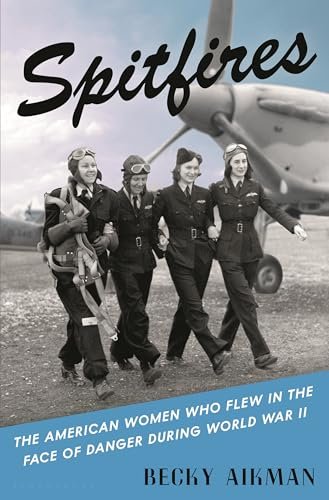
Book Review of Spitfires: The American Women Who Flew in the Face of D…
Review of Spitfires: The American Women Who Flew in the Face of D… by Eileen Clymer Schwab
As a former Air Cadet and a passionate aviation enthusiast, I was immediately drawn to Spitfires: The American Women Who Flew in the Face of D… by Eileen Clymer Schwab. The very idea of exploring the untold stories of the American women pilots during World War II sparked my curiosity—after all, these women faced incredible adversity, just like many of us face new challenges daily. However, as I dove into the pages, my excitement was soon marred by a range of frustrating inaccuracies that colored my experience.
At its heart, the book attempts to pay homage to the brave women who took to the skies when the world needed them most. Schwab introduces us to remarkable characters, from spirited recruits to seasoned aviators, with vivid narratives that draw readers into their world. However, my professional background in aviation made it challenging to overlook certain glaring errors, like the interchangeable use of "spin" and "spiral." The distinction is not just technical jargon; it’s a matter of life and death in aviation. For a seasoned pilot, referring to a spiral as a spin is not a minor oversight; it’s a significant misrepresentation that could lead to misunderstandings for novice readers.
Beyond the technical inaccuracies, I was taken aback by other editorial missteps, such as mislabeling aircraft in a way that undermined their historical significance. Referring to Spitfires and Hurricanes as "ships" diminished their monumental legacy, and I couldn’t help but wonder how a project about aviation could lose sight of such essential terminology.
Schwab also references John Gillespie Magee Jr.’s "High Flight," which hit close to home for me. While it’s wonderful to include such a poignant piece, the author incorrectly attributed Magee as Canadian. This misrepresentation left me offended, especially given Magee’s significance in pilot culture and training. It made me question the depth of Schwab’s research and whether the narratives of these incredible women had been painted with equally broad strokes.
The book’s editing left much to be desired, showcasing spelling errors and misused words that detracted from the overall experience. As someone with a degree in English and Military History, these oversights are disheartening; they create a barrier that makes it hard to genuinely appreciate the subject matter. Yet, there’s a flicker of respect in Schwab’s depiction of the female pilots. Despite the frustrations, her intention to highlight their resilience and contributions resonated with me.
In conclusion, while I wish I could have fully embraced Spitfires, the issues overshadowed its strengths. I would recommend this book to readers who are perhaps newer to aviation history or those looking for narratives of female empowerment—but with a caution to look deeper into the context surrounding its issues. It’s a compelling effort to shine a light on these unsung heroes, yet, for those of us steeped in this world, it raises more questions than it answers. Overall, I give it a tentative three stars, recognizing Schwab’s intentions while wrestling with its execution. If anything, my reading experience has deepened my appreciation for the need for accuracy in storytelling, especially in the realm of history.
Discover more about Spitfires: The American Women Who Flew in the Face of D… on GoodReads >>


